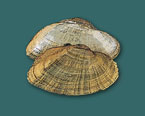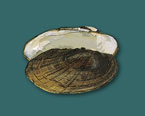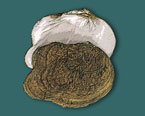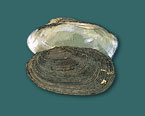Anything
we do to our streams and rivers can threaten freshwater mussels. Certainly
dams, channelization, dredging or revetment have a devastating effect on
all river life, mussels included. More subtle degradation is equally pernicious.
Agricultural and forestry practices that increase siltation can literally
bury mussel beds; Nutrients used to enhance crop production can choke our
streams with algae. As filter feeders mussels are particularly sensitive
to hazardous chemicals such as ammonia and heavy metals. Add to this gauntlet
of habitat degradation the new horror of competition from invasive species.
It’s really not a good time to be a mussel. First a quick survey of the
problems. Then thankfully; a glimpse at some of the potential solutions.
DAMS:
![]()
![]()
There are an estimated 2 million dams in this country, 75,000 registered as large
dams with the U.S. Army Corps of engineers. A staggering 600,000 miles of river
are impounded behind dams, and the resulting blockages and disruption in the
natural flow wreak havoc for aquatic life for hundreds of thousands of river
miles above and below the nation’s dams. They were built to create hydropower,
to facilitate navigation, for flood control, water supply and recreation. We
sort of went “dam crazy’ in the first half of the twentieth century, using our
newfound industrial might to impound rivers and streams at a breakneck pace.
The function and utility of dams for society at large will continue to be debated,
but from the freshwater mussel point of view, there are no good dams. Most mussels
depend on free flowing rivers and streams. Dams by their nature, transform moving
water into still water, shallow water into deep water. By slowing the velocity
of the current, dams allow suspended sediments to drop to the river bottom, burying
existing mussel beds. The prospects for new mussel beds is even more dire. As
barriers to fish migration, dams can effectively block mussel movement by blocking
the movement of the host fish. Lock and Dam number 19 on the Mississippi at Keokuk,
Iowa is a classic example. By blocking the upstream migration of skipjack herring,
the dam effectively eradicated the ebonyshell and elephantear mussels, which
use the skipjack as a host. Because of mussel’s incredible longevity, the relationship
between the dam and the mussels wasn’t fully understood for fifty years. But
without the fish host no new beds were created, and those species are now absent
from the upper Mississippi.
CHANNELIZATION:
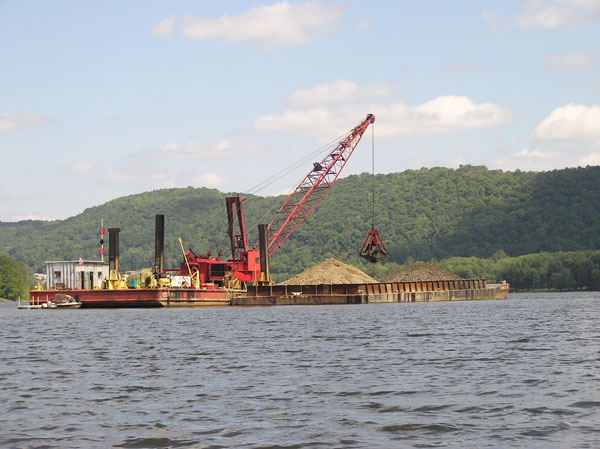
Instream gravel mining - Allegheny River PA
POLLUTION:

SEDIMENTATION / LAND USE:
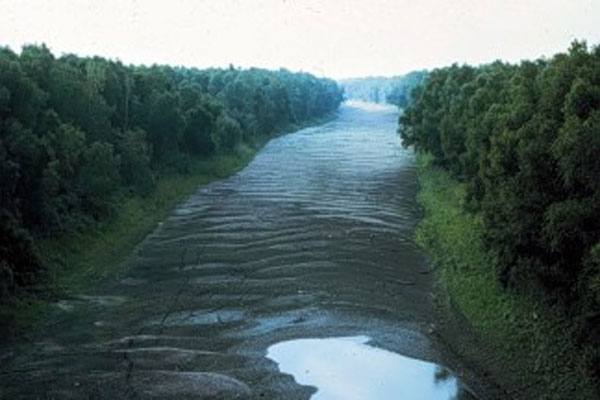
INVASIVE SPECIES:
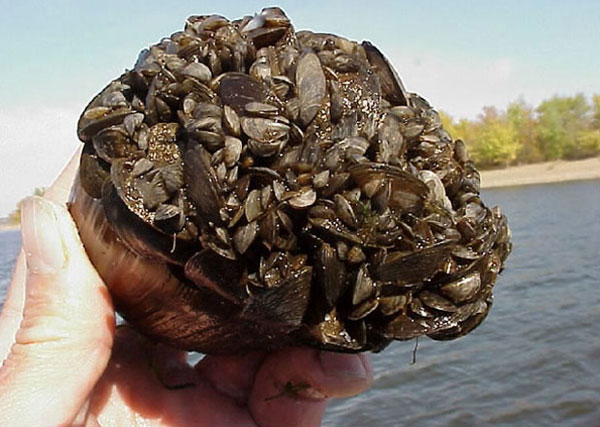
Zebra Mussels
Journal of Shelfish Research
REVIEW OF TECHNIQUES TO PREVENT INTRODUCTION OF ZEBRA MUSSELS (pdf)


